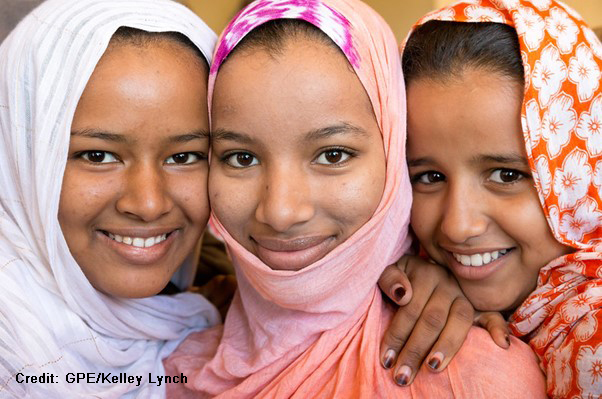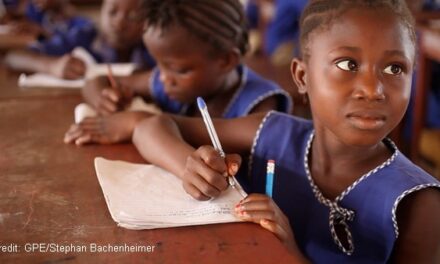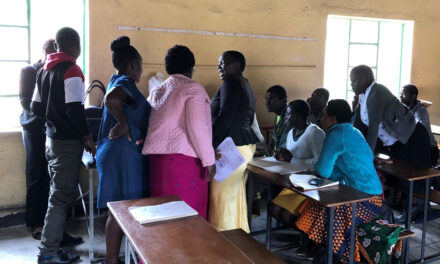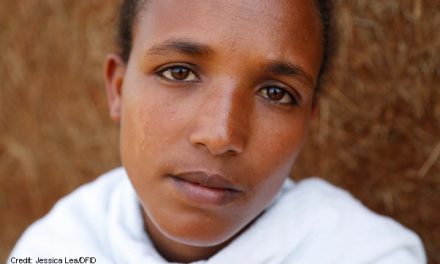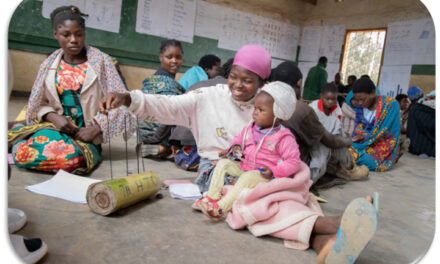This blog was written by Wongani Grace Taulo, Senior Education Advisor, and Omar Robles, Gender Programme Specialist, UNICEF. It was originally published on the UNICEF Connect website on 16 June 2021.
“Where are the girls?” It’s a question that is asked too much when stepping into classrooms around the world. And the further up the school years we go, the more the question bounces around an echo chamber.
Massive strides have been made in girls’ education. Between 1995 and 2018, 180 million more girls enrolled in primary and secondary school globally. However, a learning crisis persists – and COVID-19’s impact risks reversing these gains. While the global learning crisis highlights deficient quality in education systems around the world, it goes much deeper for girls. Girls face multiple vulnerabilities that inhibit their ability to access a basic education: risk of child marriage, early pregnancy, gender-based violence, female genital mutilation, sexual exploitation and child labour.
All these barriers are heightened during crises. Indeed, previous emergencies suggest that girls are at elevated risk of dropping out of school. For example, teenage pregnancies increased during the Ebola crisis, with a high percentage of adolescent girls undergoing first-time pregnancy during the outbreak.
Life does not freeze during a pandemic. Some children have benefited from digital learning modalities, while others have had all learning opportunities removed. Girls in particular face more pressure than boys to prioritize household chores and family care. And the fact is, even temporary lack of access makes it difficult to re-enter education. School closures due to the COVID-19 pandemic could drive 20 million more secondary school-aged girls out of school after the crisis has passed around the world. Already, there are indications of a gender gap in re-enrolment. For example, in Kenya, only 84 per cent of adolescent girls have re-enrolled compared to 92 per cent of adolescent boys.
As schools reopen, education systems in many countries may once again have to ask the question.
It does not have to be this way. We know what to do to ensure every girl’s right to education is realized. But it will require a concerted effort and considerable resources to make this happen.
Questions we should be asking
Education systems need support to be more gender-responsive and prioritize girls’ safety, protection, and learning. Every reopening and recovery plan must apply an equity and inclusion lens. We need to ask not just what children need to re-engage in education, but specifically, what do girls need? How do we bring the learning environment to the most marginalized child? What options are there for affordable distance learning? What incentivizes their return to the classroom? How do we mobilize communities and parents to help them understand the value of educating their girls – and then support them to make that happen? How do we increase investments?
If we can ask these questions from the beginning of the recovery process, we can not only bring girls who had previously attended school back in, but also support previously out-of-school girls to enrol and stay in schools.
It is also paramount for girls to develop secondary-level knowledge and skills and become equipped to transition to further education and/or work. Secondary education has a positive effect on cognitive skills, which correlates strongly with increased wages and GDP growth, poverty reduction, and reduced fertility and population growth. It can also protect them from early marriage and sexual exploitation.
Work to help boost girls as schools reopen is already underway with several countries blazing a trail.
- Ghana: When COVID-19 shuttered schools throughout the country, UNICEF worked with the Government on distance learning radio programmes, including gender-responsive lessons in STEM, for students from kindergarten through to junior high school.
- South Sudan: UNICEF and the Government have undertaken a comprehensive Back-to-School campaign and catch-up programmes that focus on skills-development for adolescent mothers.
- Zimbabwe: UNICEF is collaborating with the Government and Microsoft on the Learning Passport, an innovative global platform that provides flexible online and offline gender-responsive content in multiple languages.
UNICEF is also advising government policy and influencing strategies through several tools – such as the Reimagining Girls’ Education: Solutions to Keep Girls Learning in Emergencies – which enrich national action with global experience, and the Skills4Girls initiative that engages girls as partners to design and deliver solutions. For this crisis, UNICEF has shared the Framework for Reopening Schools and the Building Back Equal: Girls back to school guide, which has key strategies that can help to make education reopening and recovery gender-responsive and protective for all children.
Revolutionizing education systems for girls will require strong leadership and bold actions such as the recent G7 Declaration on Girls’ Education. We have the commitments; we have the tools. We know why girls face barriers to education and why they should be able to participate in 12 years of education. And we know the numbers. Where are the girls? They’re here, ready to learn. Let’s make it happen.

